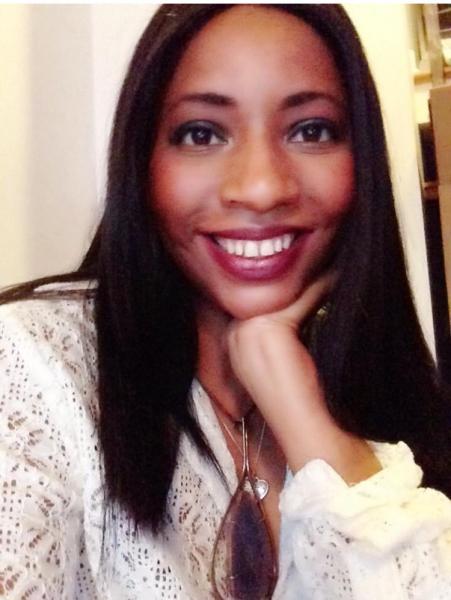- About Archives
- About SAA
- Careers
- Education
- Publications
- Advocacy
- Membership

Professional Experience: Independent Archival Instructor and Consultant, Faculty, California Rare Book School, Director of Collections and Services, Schomburg Center for Research in Black Culture, 2013–2014; Executive Director, The Black Metropolis Research Consortium at the University of Chicago, 2011–2013; Consulting Archivist for The Black Metropolis Research Consortium at the University of Chicago, 2007–2011; Adjunct Professor, Dominican University Graduate School of Library and Information Science, 2007–2013; Herbert H. Lehman Curator, Columbia University Rare Book and Manuscript Library, 2004–2007; David N. Dinkins Archivist, Columbia University Rare Book and Manuscript Library, 2003; Assistant Archivist, Harvard University Herbarium 2001–2003; Library Assistant, Whitney Museum of American Art, New York, NY, 2001; Special Collections Assistant, Princeton University Rare Books and Special Collections Dept., 1999–2001.
Education: BA in Political Science, University of Houston, 1995; MS in Library and Information Science with Specialization in Archives and Preservation Management, Simmons College Graduate School of Library and Information Science, 2002.
Professional Activities: Society of American Archivists: Member since 2002; Nominating Committee Member, 2010–2011; Annual Meeting Host Committee Member (Chicago), 2010–2011; Program Committee Member, 2004; Values Task Force Member, 2008–2011; Archivists and Archives of Color Roundtable Co-chair, 2009–2011, Mosaic Scholarship Program Planning Subcommittee, Member 2010–2012.
Awards: SAA Distinguished Service Award, to the Black Metropolis Research Consortium 2013.
Other Professional Activities: African American Collections Advisory Board Member, University of California, Riverside (2015–present); Chicago Area Archivists (2010–2013), RBMS (ARL) Diversity Task Force (2005–2006); ARL Minnesota Leadership Institute (2004). Mid-Atlantic Regional Archives Conference (MARAC) Member, (2003–2006); Program Committee Member (2005). Numerous presentations at professional conferences on the use of primary resources as pedagogical literacy tools, outreach to diverse communities, and African American primary resources.
* * *
Question posed by Nominating Committee:
SAA is a member-governed organization that is composed of dozens of constituent groups with a variety of viewpoints. In recent years, SAA’s governance structure has strived to be more transparent and responsive in addressing member concerns. If elected, how would you help insure that the Council continues on this path and represents the broad interests of our diverse profession in a transparent manner?
Candidate's Response:
As a thirteen-year member of SAA, I believe that we all deserve a Council that serves with the highest degree of transparency and accountability. Recent efforts by SAA Council to increase the flow and dissemination of information about its decision making processes have, I believe, been met with members having increased knowledge of the positive changes and critical needs occurring within our organization.
Most recently, transparency and clarity for SAA members was particularly important when Council faced the challenging decision of whether or not to increase membership dues. Plainly speaking, no one likes increased dues and initially (at least in my archival colleague circles) the idea was met with scoffs of “Why?” However, Council rose to the occasion and displayed an impressive level of shared information, which clearly explained to the membership body that a dues increase was indeed necessary for the good of the organization. Members understood that the resources SAA needed to fulfill its organizational vision and strategic goals were strained and needed supplementation.
Transparency improves the reputation and level of trust between Council and SAA members by increasing member buy in and input. When voting on the dues referendum, due to increased Council transparency, members were able to make a more informed decision during the process. We all made a decision that we could stand behind and feel good about.
If elected, I would continue this practice of transparency ensuring that Council as our organization's governing body is more responsive to our individual members, sections, and roundtables. I am very interested in exploring collaborative spaces, such as forums, which allow regional opportunities for informed Council liaison and member participation thereby increasing constituent input in our decisions.
Last year I had the opportunity to attend an SAA Roundup meeting in Washington, DC. While not a member of the DC archival community, it was delightful to observe fellow SAA members outside of the context of an annual meeting in which I normally see them. There were pictures, great pizza and conversation about the fascinating roles played by archivists in Washington. Perhaps most importantly besides the social niceties, my further summation was that I observed a gathering that had the potential to become a unique mechanism for SAA Council members to engage its constituents and encounter firsthand situations addressing community, cultural and political diversity amongst our members.
As a people-to-people person I believe that governing bodies should not just lead but also engage. Before ideas and true transparency coalesce, as Council members, we must provide spaces for organizational stakeholders to present new ideas and inquires. In time, this will bring SAA Council to even greater life by promoting inclusion, thus giving new presence and inspiration to all members.
Slate of Candidates |
The Nominating Committee has slated the following SAA members as candidates for office in the 2016 election: